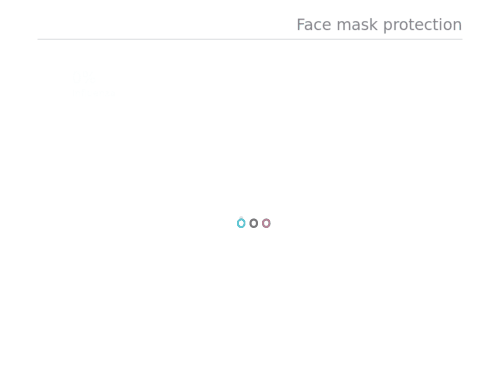The guidance on face masks has changed in many places recently, with health organizations recommending the usage of protective face masks — even if it’s just improvised masks from layered cloth.
But the science hasn’t really changed. According to a new review, the evidence for face masks was there all along.

“Our study shows that masks worn by non-infected people can effectively prevent the spread of respiratory viruses and reduce the overall risk of respiratory virus infection by 65%,” concludes the study, which was carried out by researchers working in China and the US.
The researchers looked at studies assessing the protection offered by face masks, compiling a list of 21 studies that met the researchers’ criteria for a systematic review. The studies needed to:
- analyze the relationship between the face mask and preventing respiratory viral infections;
- have laboratory evidence or follow a clinical diagnostic criteria;
- provide complete data of cases and controls for calculating an odds ratio with 95% confidence intervals.
In other words, only serious, reliable studies were considered (in English or Chinese) — and the results are striking.
“The physical characteristics of the mask can prevent the respiratory tract from contacting the outside virus, thereby reducing the risk of infection with respiratory diseases,” the study reads.
Simply put, there is a strong agreement in the studies that face masks offer protection.
It’s also not just that infected people should wear the masks — the analysis found that masks worn by non-infected people can reduce the overall risk of respiratory virus infection by 65% — this is a huge margin.
When it comes to COVID-19, the results were even more impressive:
“The risk of influenza, SARS, and COVID-19 infection reduced by 45%, 74%, and 96%, respectively,” the study concludes.

The study also compared the effect of face masks in Asian countries (where the guidance has long been in support of face masks) to Western countries, where face masks are only now being recommended on a larger scale.
According to the results, wearing masks does provide protective effects in both Asian countries and western countries by 69% and 55%, respectively. In the case of health care workers, who are most exposed to respiratory viruses, face masks reduced the risk of infection by 54% in western countries and 49% in Asia. The demonstrated reduction in risk was not insignificant, researchers add.
“[This] would suggest that the proper use of masks might play a significant role in public health efforts to suppress the spread of respiratory viruses.”
The study has not yet been peer-reviewed and has significant limitations (most notably, there aren’t all that many studies on this topic in the first place), but the results are similar to a previous meta-review carried in 2009.
This suggests that the evidence is not new — we’ve had evidence that face masks are useful all this time. Which begs the question: why weren’t they recommended earlier in the epidemic?
Read the analysis here.






